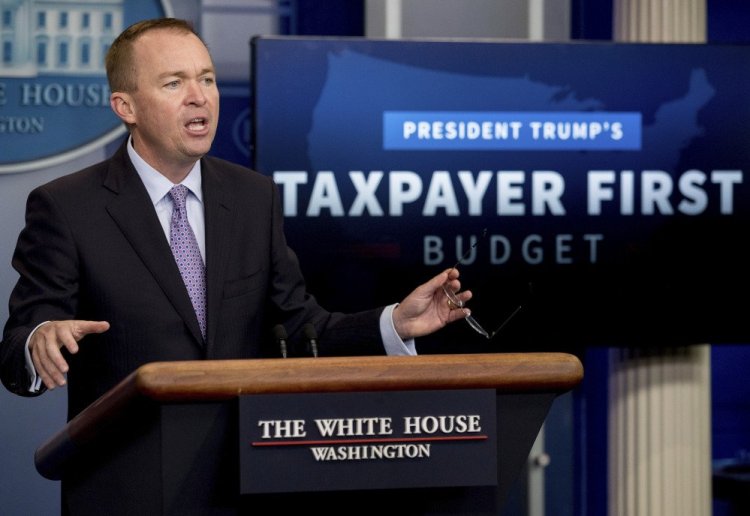Here’s the fiscal predicament facing the United States: During recent decades, the elected leaders of both parties have committed the federal government to hundreds of billions of dollars in automatic annual spending for health care and Social Security, while simultaneously establishing a level of taxation insufficient to cover those foreseeable outlays – plus other recurring needs such as assistance to the poor, national defense and scientific research, and sudden ones such as natural disasters and recessions.
In other words, there is a structural gap between the nation’s financial means and its policy priorities. This poses a threat to long-term financial stability; more immediately, it limits the government’s ability to respond to new situations with new policies. We are stuck with an unending series of short-term fiscal deadlocks and short-term fiscal fixes.
In this context, President Trump’s fiscal 2018 budget serves a valuable, if unintentional, purpose: to demonstrate how utterly irrelevant his brand of Republican ideology is to solving the problem. With Medicare and Social Security retirement benefits immune to cuts, defense guaranteed an increase and taxes slated for trillions of dollars’ worth of reductions over the next decade, Trump’s plan achieves a balanced budget in 2018 only by invoking an improbable level of economic growth – and by imposing lower levels of spending for all other purposes that would be harsh and shortsighted, in the politically unrealistic event they were ever enacted. Nondefense discretionary spending, already at a post-1962 low of 3.3 percent of economic output, would dwindle to a mere 1.4 percent of output by 2027. This is not a formula for downsizing government; it’s a formula for destroying it.
With this document, Trump, who blithely said during the campaign that he would deal with federal debt and deficits through management, essentially bows out of the serious debate on fiscal issues. What is the alternative? As any number of commissions, panels and independent experts have repeatedly determined, the United States requires a mix of programmatic reforms, affecting the entire range of spending categories, including Medicare and Social Security, coupled with increased revenue. This is how to put the federal debt on a more sustainable path, creating fiscal space for policy innovation and crisis management as needs arise.
In a phrase, what’s called for is shared sacrifice. If shared sacrifice were really the Trump administration’s reigning principle, then budgetary discipline might justifiably reach programs for the poor such as food stamps and Social Security Disability Insurance, insofar as they are operating inefficiently or creating perverse incentives. What Trump’s budget does, however, is propound the myth that these programs are driving America’s deficits, that the undeserving poor are to blame for our fiscal problem, and that they should therefore go first and go alone when it’s time to cut.
Actually, there is no path to balance that leaves out the benefits that middle- and upper-class Americans receive, disproportionately, under current federal spending and tax priorities. That is the truth. And we are going to have to act on it – sooner or, if Trump has his way, later.
Send questions/comments to the editors.


